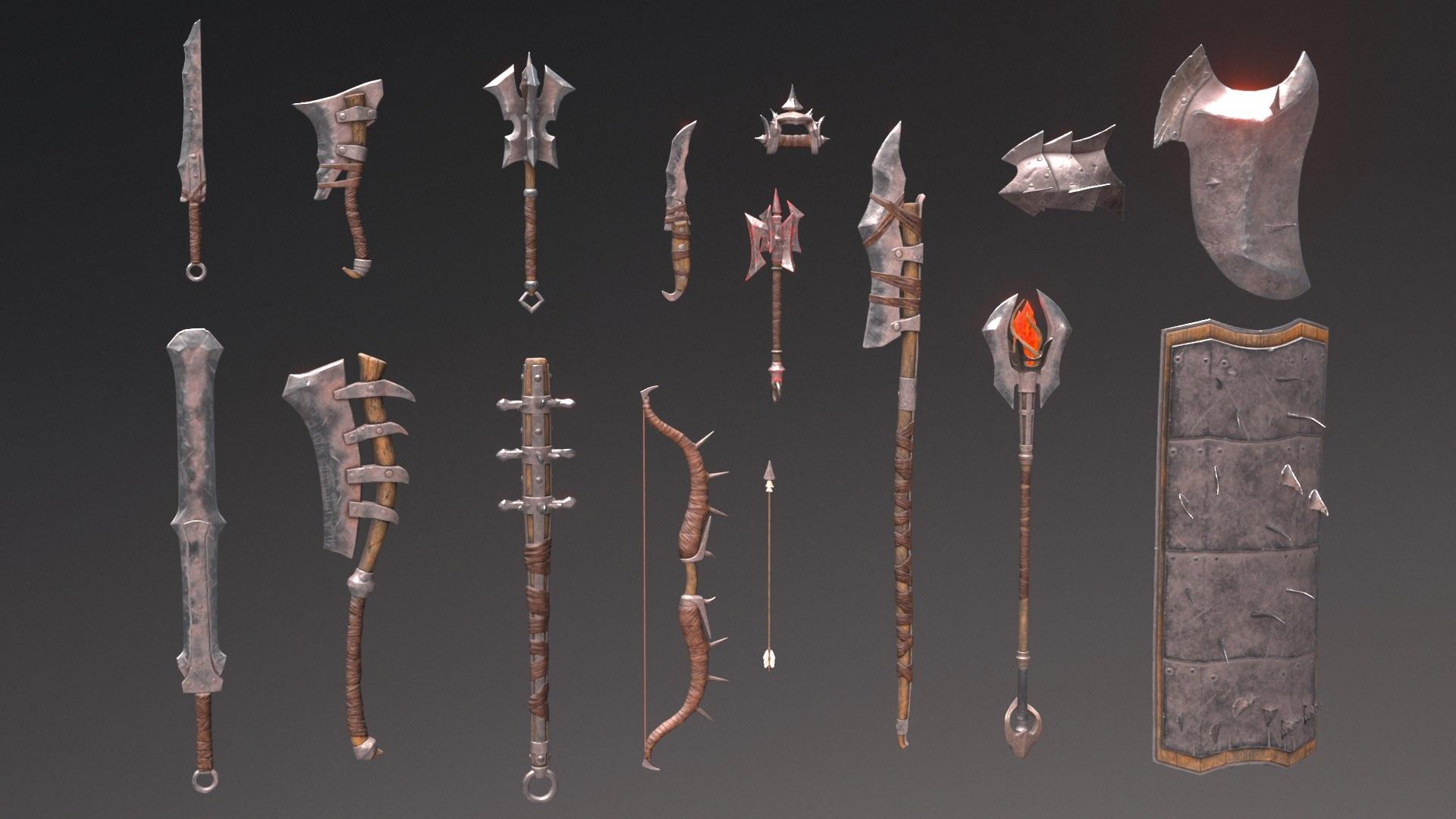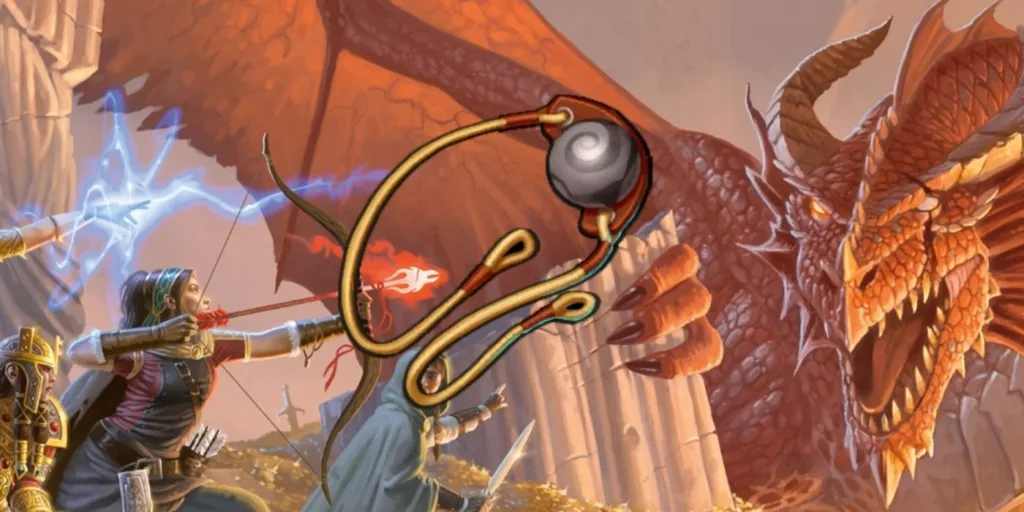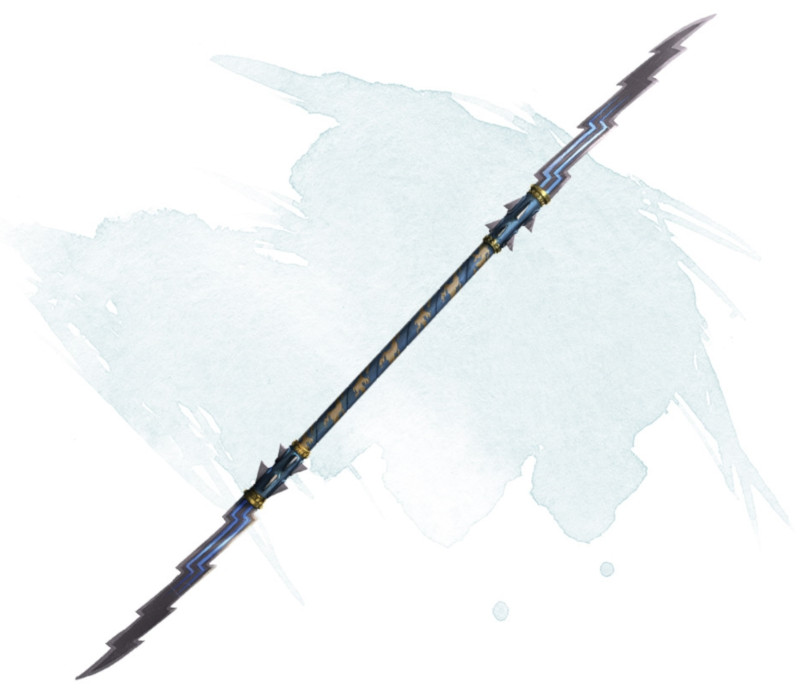Welcome to our blog where we discuss the fascinating world of Dungeons and Dragons 5th Edition! Today, we will be exploring the topic of thrown weapons and whether they use Strength or Dexterity.
In D&D 5e, there are various types of weapons, each with its own unique properties and characteristics. While most weapons are designed for melee combat, there are some that are specifically designed for ranged attacks, such as thrown weapons.
Thrown weapons are a type of weapon that can be thrown at an enemy to deal damage. They include weapons such as handaxes, javelins, light hammers, spears, tridents, and daggers. However, the question arises as to whether these weapons use Strength or Dexterity when thrown.
Melee weapons that have the thrown property only use Strength. For example, the handaxe, javelin, light hammer, spear, and trident are all weapons that require the user to use their Strength when thrown. This means that a character’s Strength modifier is added to the damage dealt by the weapon when thrown.
On the other hand, melee weapons that have the thrown and finesse property use either Strength or Dexterity. The dagger is a good example of this type of weapon. A character can choose to use either their Strength or Dexterity when throwing a dagger, as the weapon has the finesse property. This property allows the user to use their Dexterity modifier instead of their Strength modifier when making an attack roll.
It is important to note that when using a thrown weapon, the user must have the weapon in their hand. This means that they cannot also be holding a shield or another weapon in their off-hand. However, some classes or abilities may alow a character to make an additional attack with a thrown weapon as a bonus action or reaction.
Whether a thrown weapon uses Strength or Dexterity depends on the weapon itself. Melee weapons that have the thrown property only use Strength, while melee weapons that have the thrown and finesse property use either Strength or Dexterity. So, the next time you’re playing D&D 5e and considering using a thrown weapon, make sure to check its properties and choose the right ability modifier to maximize your damage output!
Can Strength be Used for Thrown Weapons in D&D 5e?
Yes, thrown weapons can use Strength in 5e. When you make a ranged attack with a thrown weapon, you use your Strength modifier to determine the attack bonus and the damage dealt. However, there are some exceptions to this rule. If the thrown weapon has the finesse property, you can choose to use either your Strength or Dexterity modifier for the attack and damage rolls. Additionally, some magical thrown weapons may have specific rules that alter how they are used in combat. Overall, though, the default rule is that thrown weapons use Strength in 5e.

Source: unrealengine.com
The Strength of Javelin Throwing
Javelins are a type of melee weapon that have the thrown property. According to the rules of Dungeons and Dragons, javelins are considered to be strength-based weapons. This means that the attack roll and damage dealt with a javelin are determined by the character’s Strength score, rather than their Dexterity score. Therefore, when throwing a javelin, it is important for the character to have a high Strength score in order to maximize the weapon’s effectiveness.
Does Dexterity Affect Thrown Handaxe Damage?
No, a thrown handaxe does not use Dexterity. When you throw a handaxe, you use your Strength modifier to determine the attack roll and damage dealt. The handaxe does not have the finesse property, which means it cannot be used with Dexterity for attack rolls or damage calculations. However, if you have abilities or features that allow you to add your proficiency bonus to damage rolls, such as the Barbarian’s Rage feature, you would still apply that bonus when throwing a handaxe.
Does Javelin Utilize Dex?
No, javelins do not use Dexterity for attack rolls when thrown. Instead, they use Strength as their attack modifier. This means that a character’s Strength score is added to their attack roll when throwing a javelin, and not their Dexterity score. However, Dexterity may still be used for other actions related to javelins, such as catching or dodging them.
Does the Use of Dex in Slings Provide Benefits?
Yes, slings use the Dexterity (DEX) modifier on attack rolls. This is because slings are a ranged weapon that requires a certain level of skill and precision to use effectively. The higher your Dexterity score, the more accurate and deadly you can be with a sling. It is important to note that slings also use the character’s proficiency bonus (if they are proficient with the weapon) and any other relevant modifiers, such as magic bonuses or abilities that affect ranged attacks.

Are Thrown Weapons Considered Finesse Weapons?
Yes, thrown weapons can be considered finesse weapons as long as they meet the criteria of the finesse property. The finesse property allows a weapon to use either the wielder’s Strength or Dexterity modifier for attack and damage rolls, depending on which modifier is higher. This means that if a thrown weapon, such as a dagger or a javelin, has the finesse property, it can use the wielder’s Dexterity modifier instead of Strength when making attack and damage rolls. However, not all thrown weapons have the finesse property, so it’s important to check the specific weapon’s description to determine whther or not it qualifies as a finesse weapon.
The Effect of Throwing on Strength and Dexterity
Throwing is a combination of both strength and dexterity. Dexterity is used to aim and accurately throw the object, while strength is used to generate momentum and power behind the throw. The speed and distance of the throw are determined by the strength of the thrower, while the accuracy of the throw is determined by the dexterity of the thrower. Therefore, when uing thrown weapons, the attack roll is made using dexterity, while the damage roll is made using strength. It is important to note that the specific rules and mechanics for throwing may vary depending on the game or system being used.
Weapons That Require Strength or Dexterity
Most melee weapons, such as axes, maces, and swords, use strength as their main ability score for attack and damage rolls. However, some melee weapons have the finesse property, which allows you to choose between using your strength or dexterity modifier. These weapons include rapiers, shortswords, and daggers.
Thrown weapons, such as throwing axes or javelins, also use strength as their main ability score. However, if the thrown weapon has the finesse property, you can choose to use your dexterity modifier intead of strength.
Ranged weapons, such as bows and crossbows, typically use dexterity as their main ability score for attack rolls, while their damage is determined by the weapon’s properties and ammunition. However, some ranged weapons have the loading property, which means you need to use an action to reload the weapon after firing it, and the ammunition property, which determines the type of ammunition needed for the weapon to function properly.
The Role of Muscular Strength in Javelin Throw
Yes, javelin throw is largely dependent on muscular strength. The javelin thrower needs to have strong arms, shoulders, and back muscles to generate enough force to throw the javelin as far as possible. They also require strong legs and core muscles for stability and balance during the throwing motion. Javelin throwers typically engage in strength training exercises such as weightlifting and plyometrics to develop thir muscular strength and power. However, muscular endurance is also important as the throwing motion requires sustained muscular effort over a period of time. Overall, a combination of muscular strength and endurance is crucial for success in the javelin throw event.

Scaling of Weapons With Dexterity
In the world of Elden Ring, there are a multitude of weapons to choose from, each with its own unique strengths and weaknesses. When it comes to choosing a weapon for a dexterity build, the best option would be a weapon that scales well with dexterity. Weapons that scale with dexterity will increase in damage output as the player’s dexterity stat increases.
One of the best weapons for a dexterity build is the Uchigatana. This katana-type sword has a fast attack speed and deals high damage, making it a popular choice for players who prefer a quick and agile playstyle. The Uchigatana scales well with dexterity, making it an excellent choice for players who want to focus on building up thir dexterity stats.
Another great option for a dexterity build is the Scythe. This weapon has a long reach and deals high damage, making it an effective choice for players who prefer to keep their distance from their enemies. The Scythe also scales well with dexterity, making it an excellent choice for players who want to focus on building up their dexterity stats.
Other weapons that scale well with dexterity include the Parrying Dagger, the Godskin Peeler, the Wakizashi, Morgott’s Cursed Sword, and Moonveil. Each of these weapons has its own unique strengths and weaknesses, so players should experiment with different weapons to find the one that best suits their playstyle.
In conclusion, when it comes to choosing a weapon for a dexterity build in Elden Ring, players should look for weapons that scale well with dexterity. The Uchigatana and Scythe are both excellent choices for players who want to focus on building up their dexterity stats, but there are many other weapons to choose from that can also be effective in the hands of a skilled player.
Is the Uchigatana a Dexterity-Based Weapon?
Yes, the Uchigatana is considered a dex weapon in the game. This is because it scales primarily with dexterity stat, which means that the higher your dexterity stat, the more damage you will deal with the Uchigatana. Additionally, the weapon’s moveset is designed to complement a dex build, as it is very fast and agile, allowing for quick and precise strikes. The Uchigatana is a popular choice amng players who prefer a dex-focused playstyle, and it is often used in PvP due to its bleed and hemmorrhage effects. Overall, the Uchigatana is a great option for those looking for a reliable and effective dex weapon in the game.
The Practicality of Throwing Axes
Throwing axes can be practical in certain situations, but they may not be the most effective or efficient option. Axes are heavier and have a shorter range than spears or javelins, which makes them less accurate and harder to throw with force.
However, throwing axes can be useful in close-range combat or hunting scenarios, where a heavier weapon can provide more power and impact. They can also be used as a backup weapon for situations where a primary weapon is unavailable or lost.
Additionally, throwing axes can serve as a multi-purpose tool, as they can be used for chopping, splitting, and other camp-related tasks. This versatility can make them a practical choice for those who are lookng for a practical tool that can also serve as a weapon if needed.
Overall, while throwing axes may not be the most practical throwing weapon, they can still be a useful tool for certain situations and tasks.
What Weapons are Compatible with Dex?
In Elden Ring, there are seveal weapons that can be used with a Dexterity (Dex) build. These weapons are typically lighter and more nimble, allowing for quicker attacks and mobility. Some of the most popular Dex weapons include daggers, katanas, spears, whips, and bows.
Daggers are fast and agile weapons that can be used for quick strikes and evasion. They are often paired with shields or parrying tools for added defensive capabilities.
Katanas are a type of sword that prioritizes speed and precision over raw power. They are often used for quick, high-damage attacks and can be effective in both one-on-one combat and against groups of enemies.
Spears are long, versatile weapons that can be used for both close-range and long-range attacks. They are often used to keep enemies at a distance, allowing for safer attacks and easier dodging.
Whips are unique weapons that can be used for both melee attacks and ranged attacks. They are often used to disarm opponents, as well as stun and slow them down.
Bows are ranged weapons that can be used to attack from a distance. They are often used for stealthy attacks and can be effective against enemies that are difficult to approach.
In summary, there are many weapons that can be used with a Dex build in Elden Ring, including daggers, katanas, spears, whips, and bows. Each weapon has its own strengths and weaknesses, so it’s important to choose the right one for your playstyle and situation.
Do Fighters Benefit from Using Dexterity?
Fighters can use Dex, but it depends on the specific build and playstyle of the fighter. Some fighters may prioritize Strength over Dex, while othrs may focus on Dex for their attacks and defense. Fighters who use ranged weapons or finesse weapons, such as a rapier, will likely rely on Dex more heavily than those who use heavier weapons like greatswords or mauls. Additionally, Dex can be useful for fighters who want to be agile and maneuverable in combat, making them harder to hit and allowing them to dodge and avoid attacks. Ultimately, the decision to use Dex as a fighter depends on the individual player’s preferences and the specific character build they are creating.
Conclusion
In conclusion, Dungeons and Dragons 5th edition is a highly popular and widely played tabletop role-playing game that offers endless possibilities for players to immerse themselves in a world of fantasy and adventure. Its streamlined rules and mechanics make it accessible to both new and veteran players, while its expansive lore and world-building allow for endless customization and creativity. With its emphasis on collaborative storytelling and problem-solving, D&D 5e offers a unique and rewarding gaming experience that can be enjoyed by players of all ages and backgrounds. Whether you’re a seasoned player or a newcomer to the game, Dungeons and Dragons 5th edition is sure to provide hours of fun and excitement, as you explore new worlds, battle fierce foes, and forge unforgettable memories with your friends and fellow adventurers.
